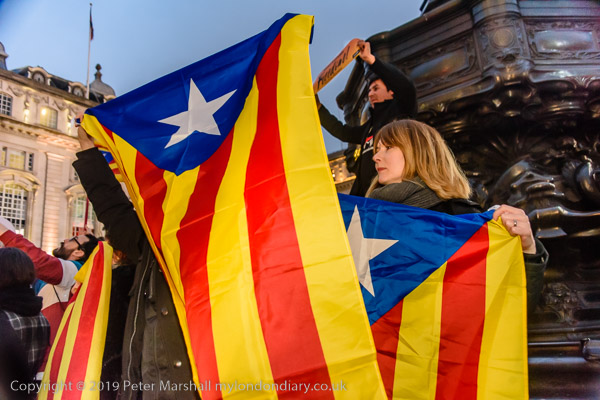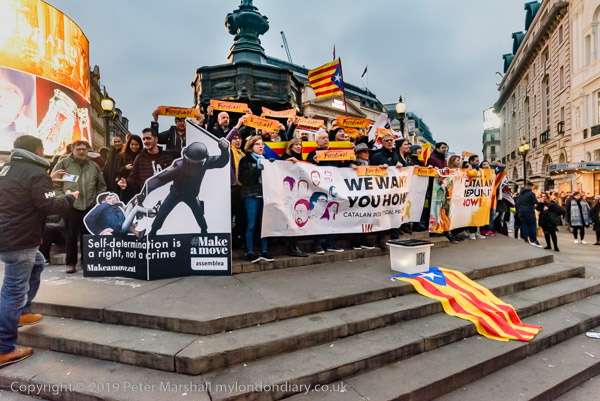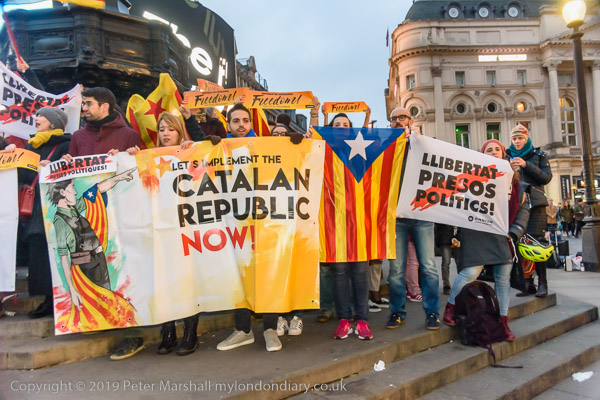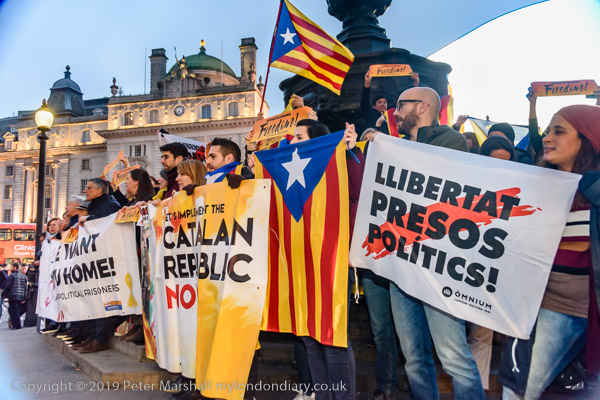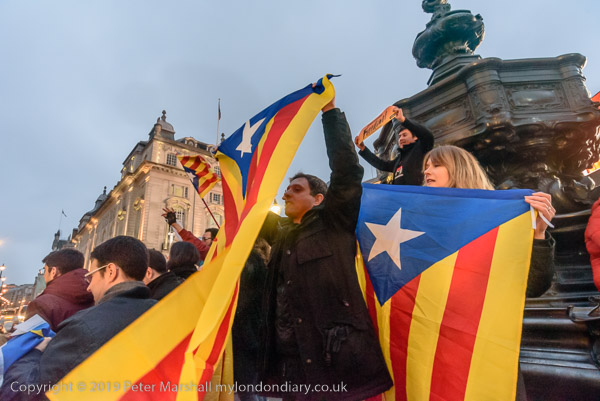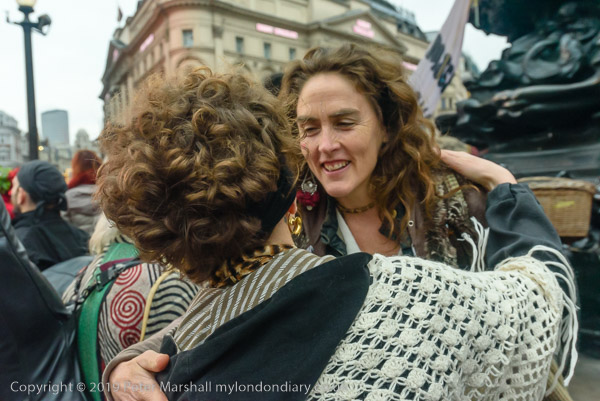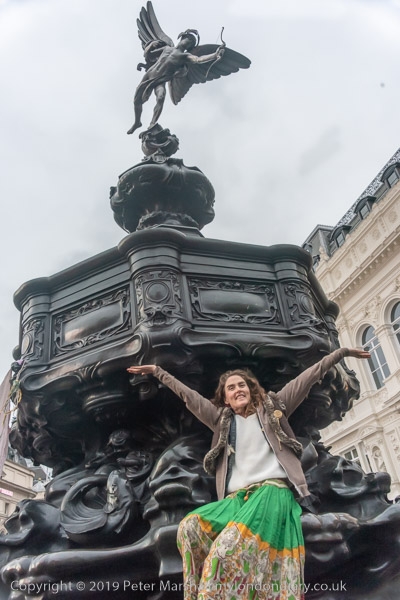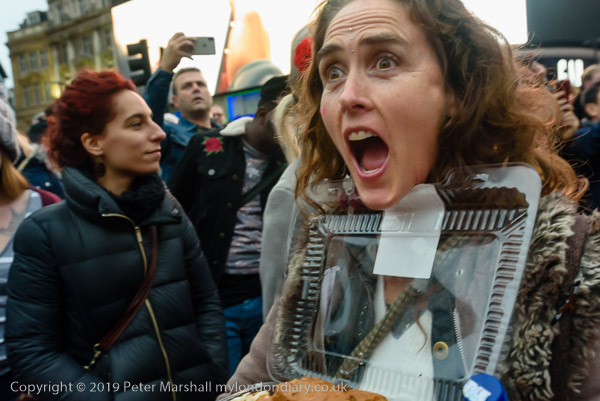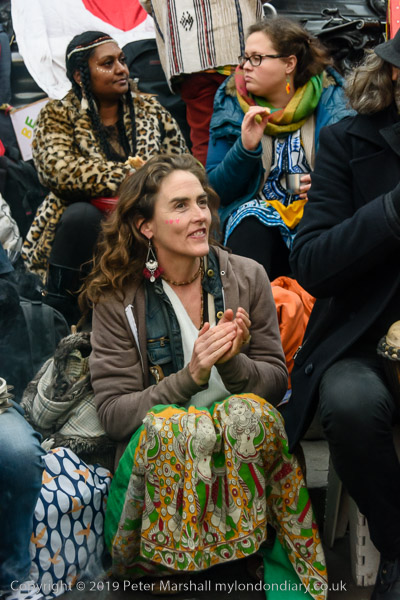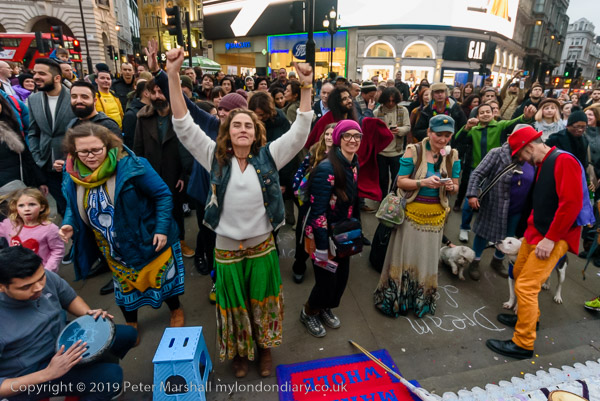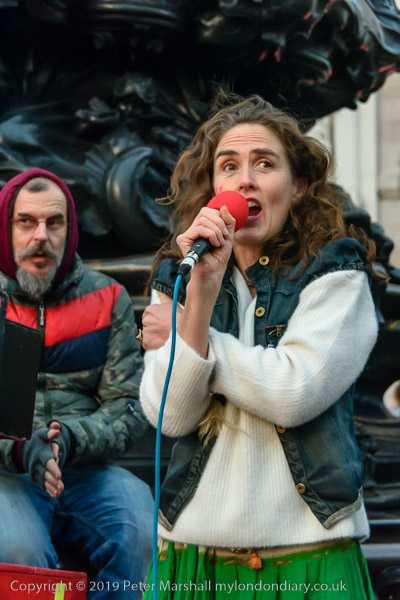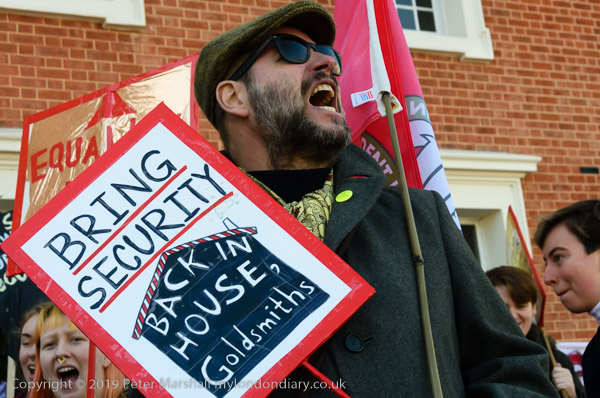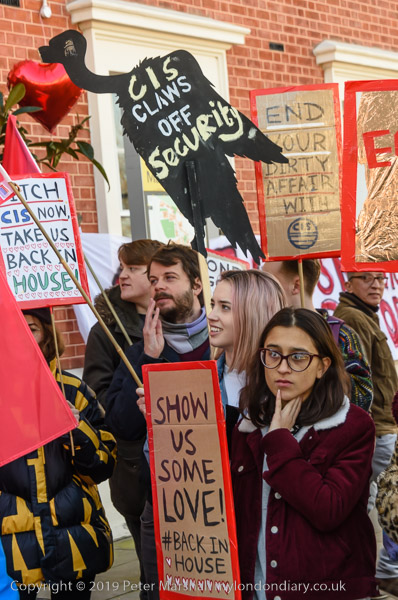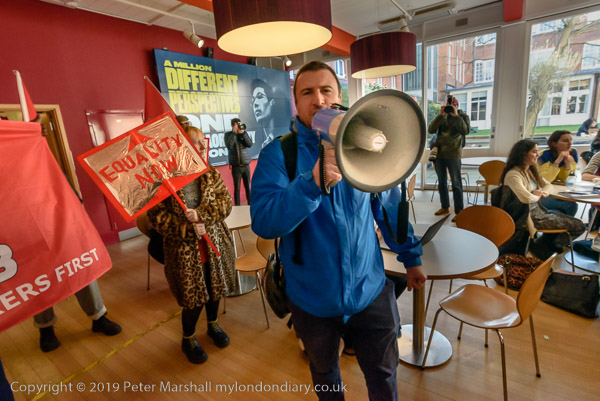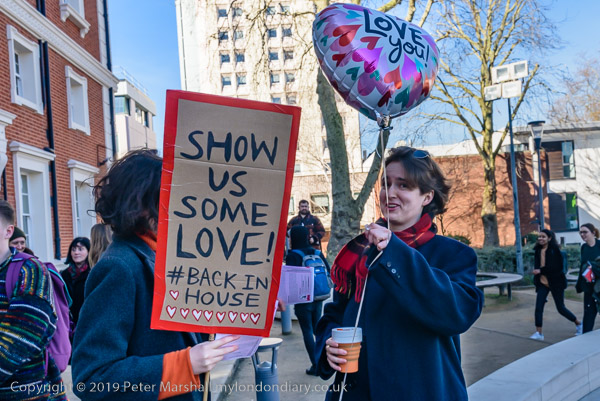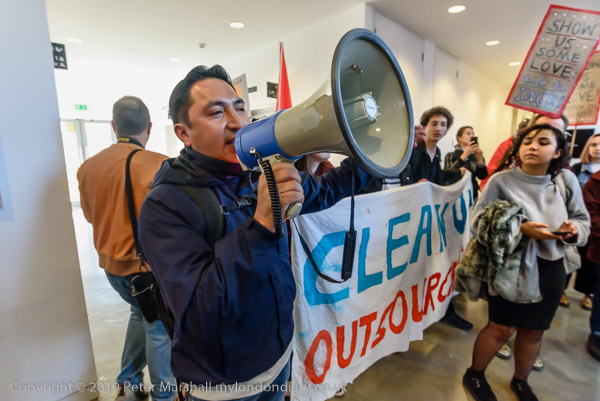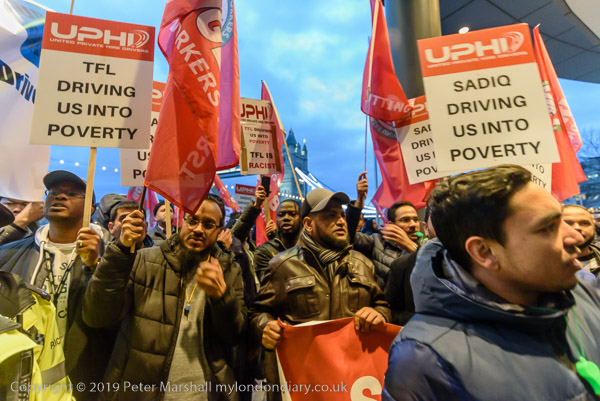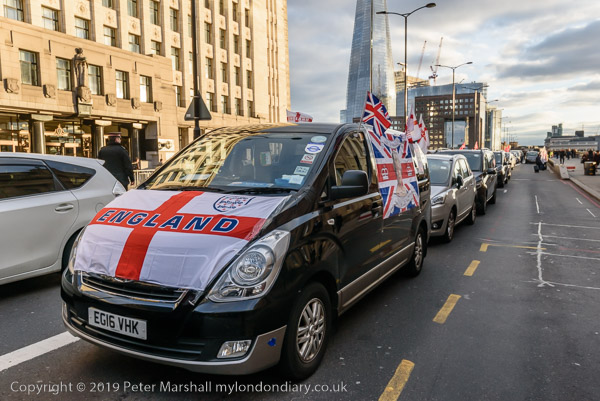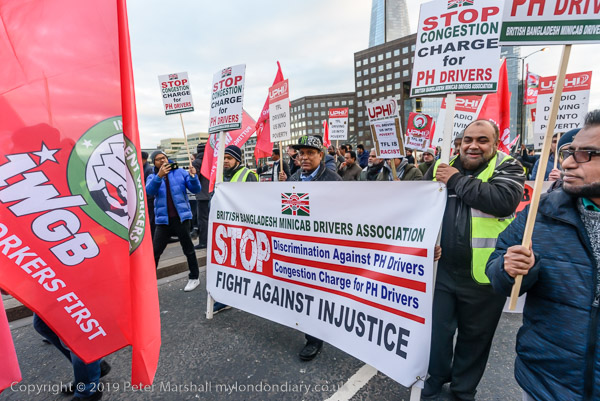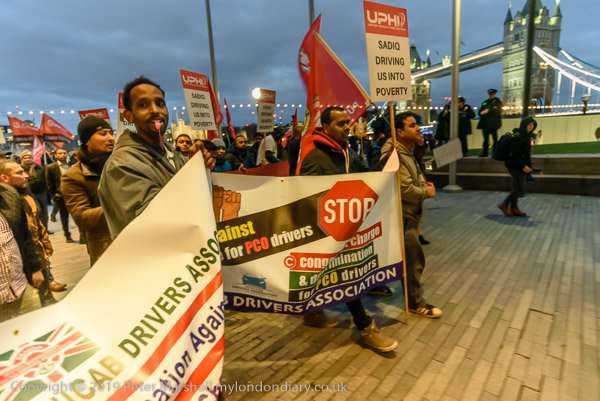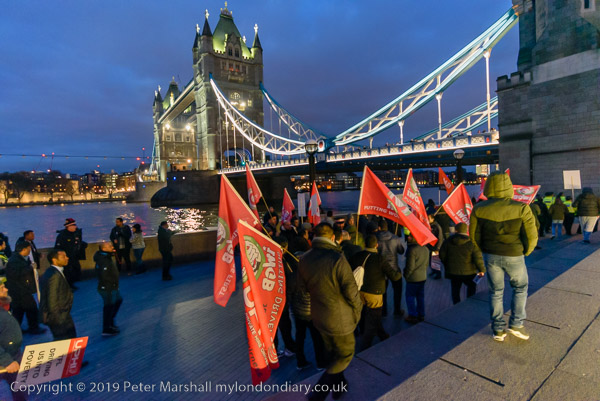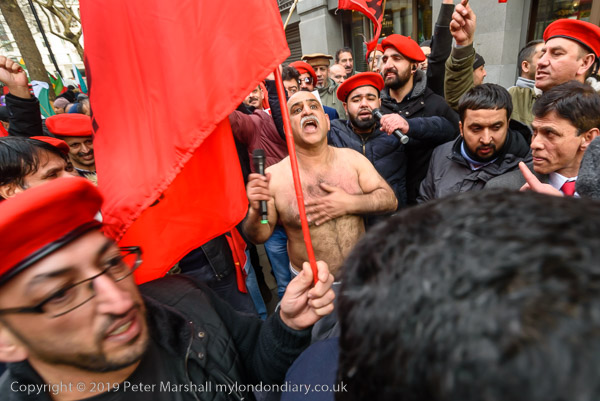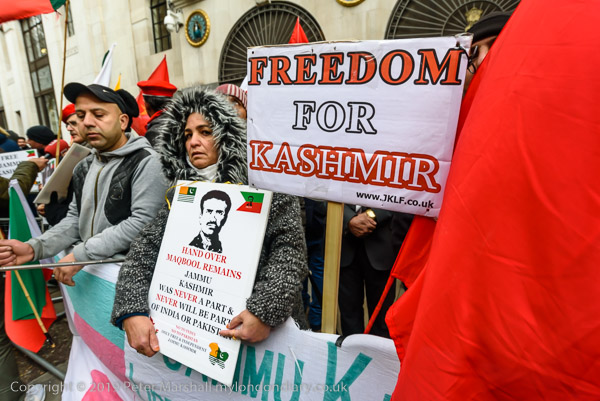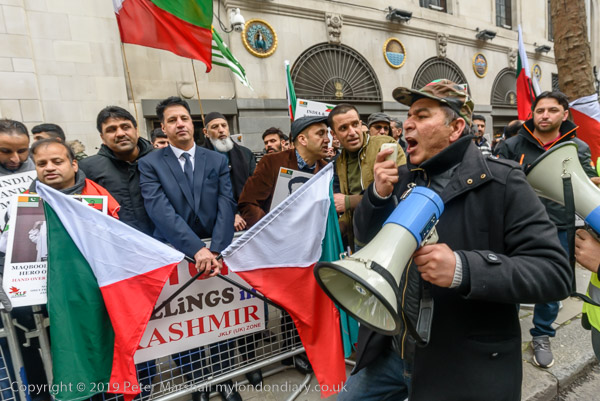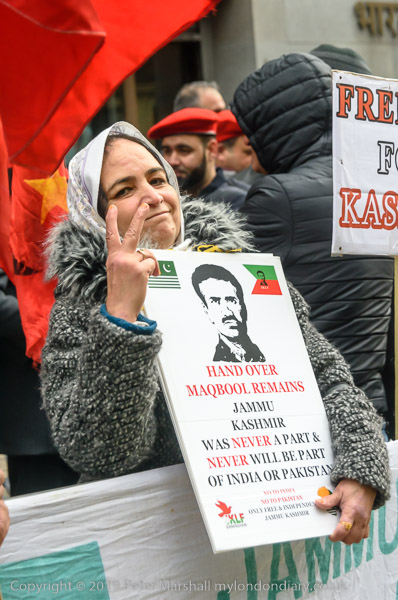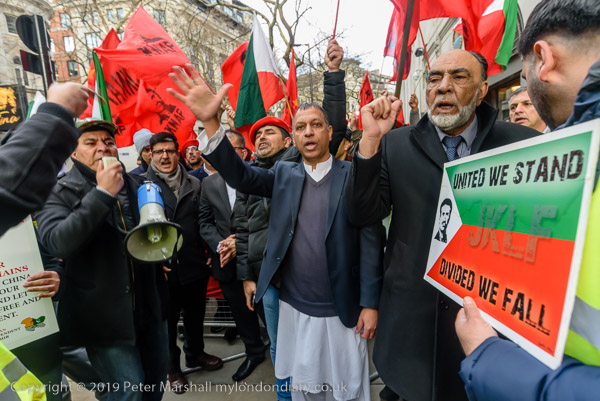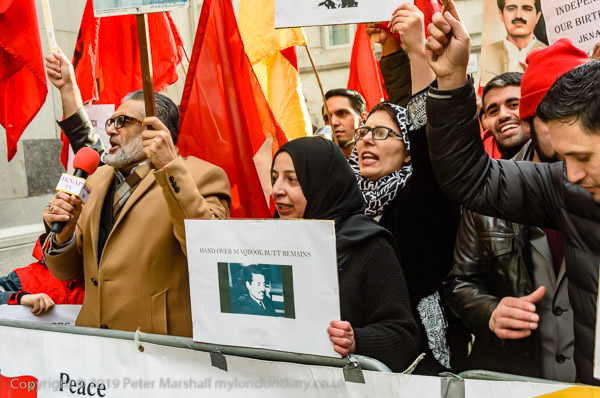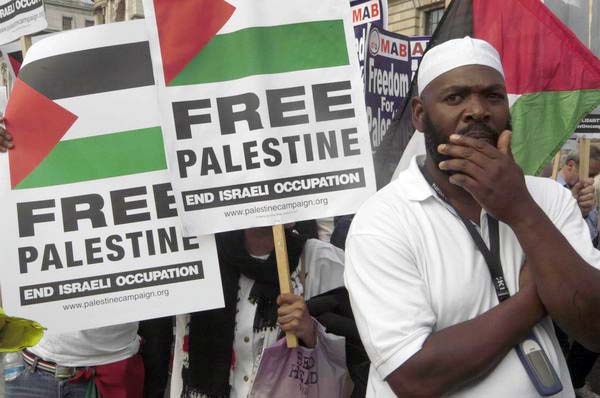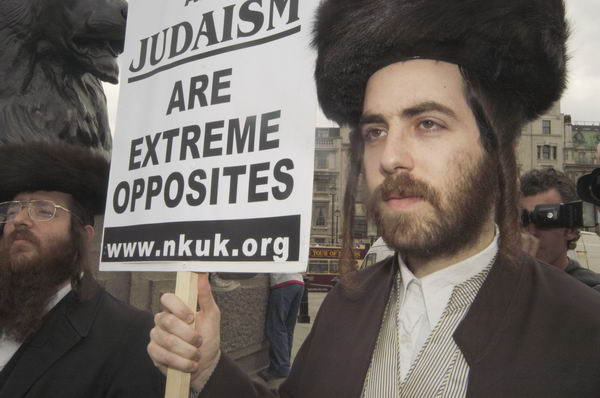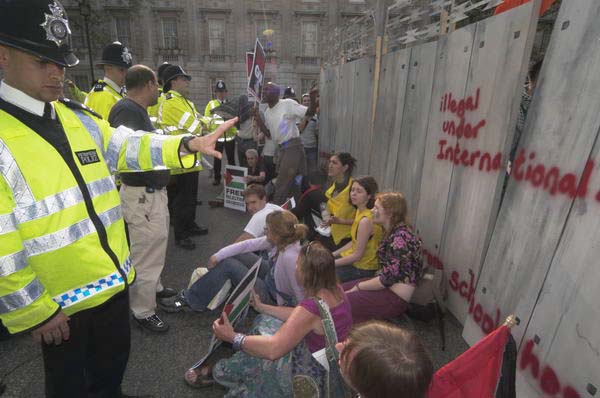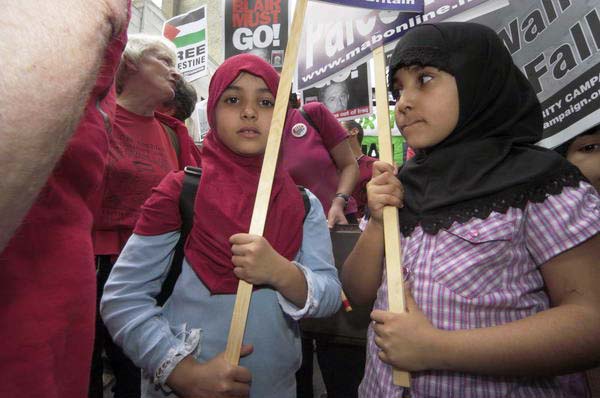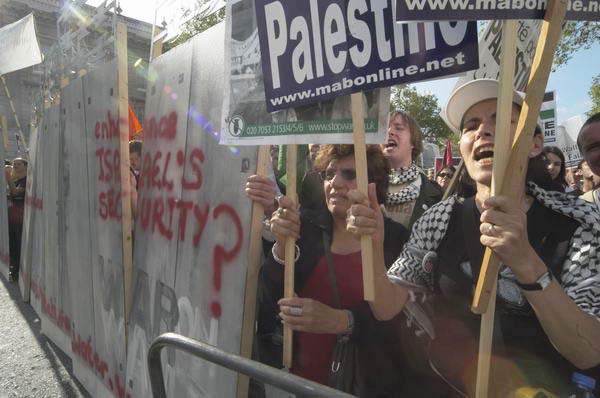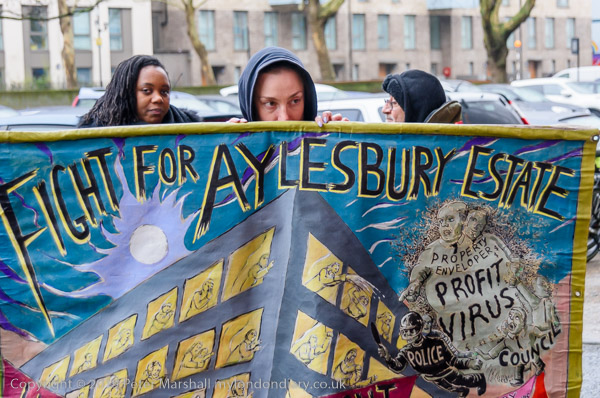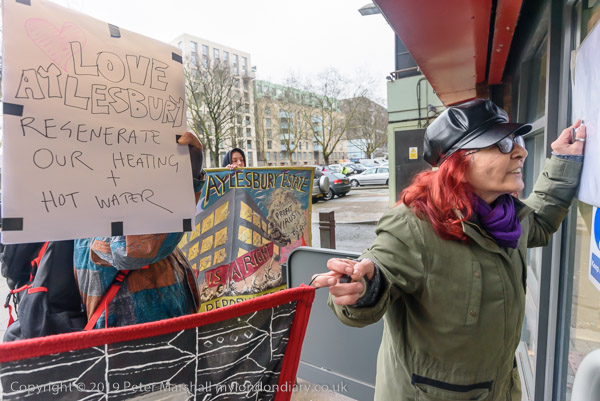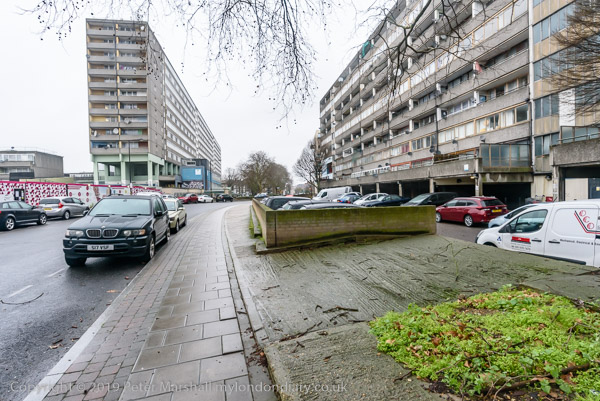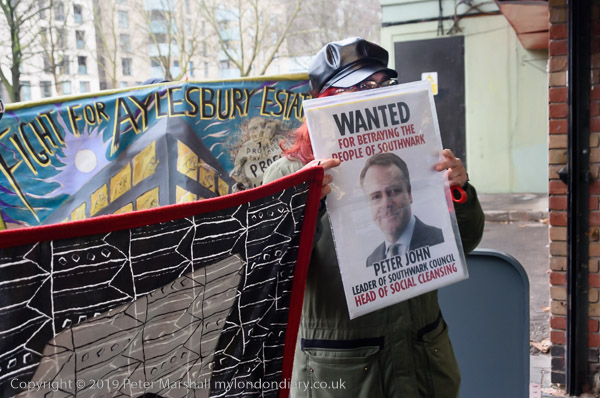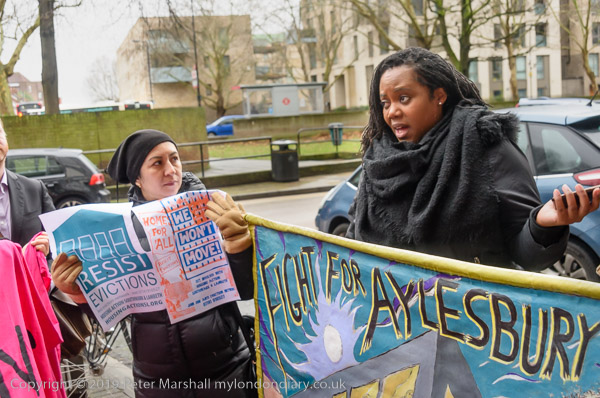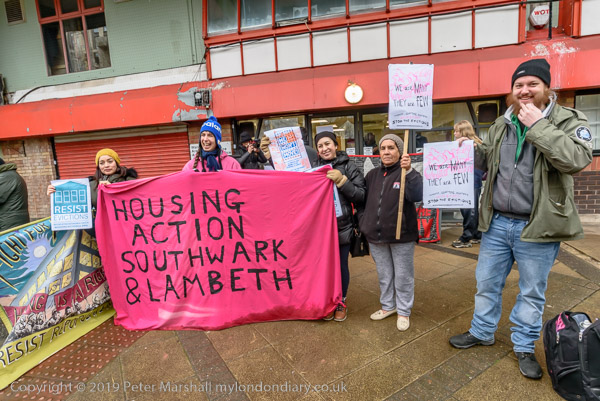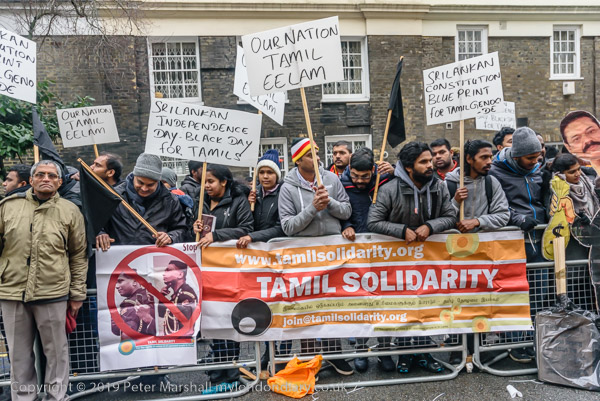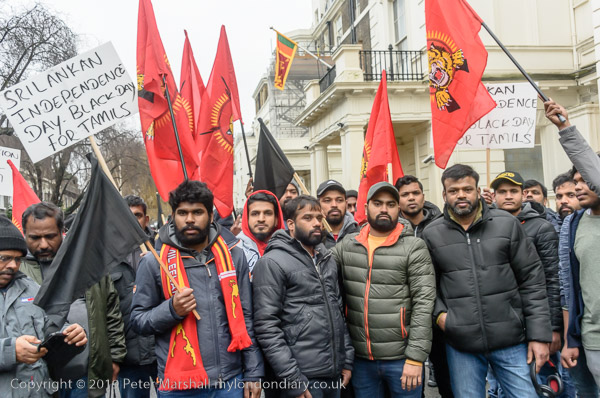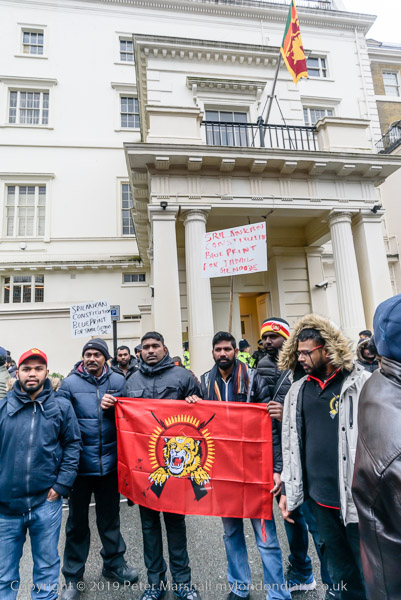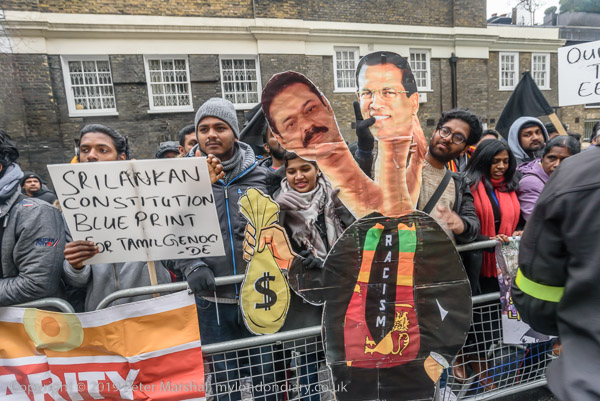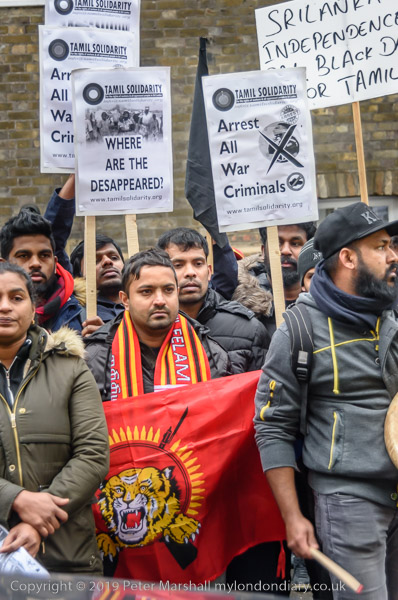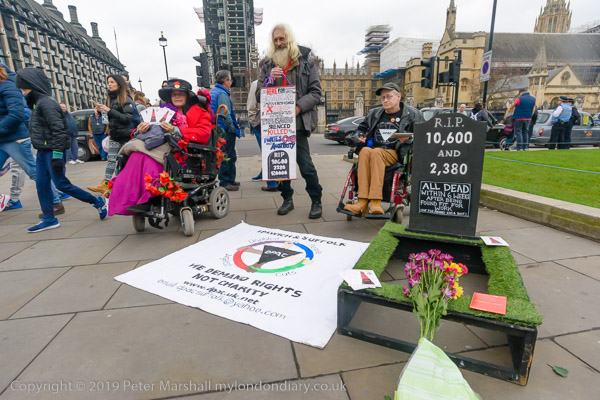
I didn’t expect Friday March 1st to be particularly busy in Westminster. Fridays generally aren’t a very busy day for protests not least because many MPs rush off back to their constituencies for the weekend. I’d gone up to take pictures largely because I knew that protesters from DPAC (Disabled People Against Cuts) were protesting against Universal Credit, which is causing widespread hardship and extreme poverty, particularly for disabled people.
They are a group I admire and the treatment of the sick and disabled by the current government has been calculatedly cruel; as a small gravestone they had brought recorded, over 12,980 people have died within six weeks of being found fit for work by a deliberately ill-designed biased scheme adminstered to make a huge proportion of incorrect decisions – which if people live long enough for their appears to be heard are overturn in over two thirds of cases – though often by the time this happens it it time for another fake assessment. It is all about cutting costs and academic studies point to around 120,000 early deaths from the Tory cuts since 2010.
That protest turned out to be rather smaller than I had hoped – and then those taking part had anticipated. In part the small number reflected the difficulties of travel for disabled people that I’ve also photographed protests about.
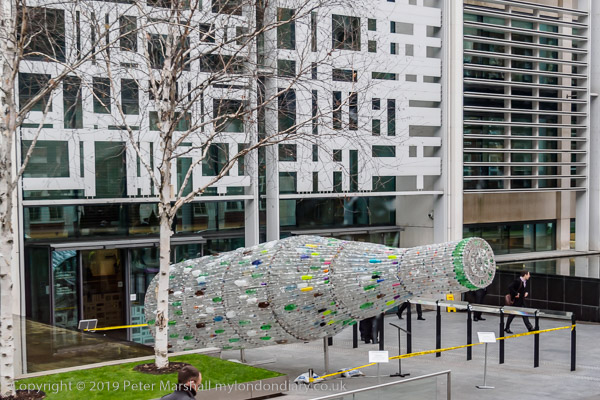
My own travel on that morning took me on a slightly unusual route. Usually I take the train to Waterloo and walk from there to Parliament Square, but I think I was feeling lazy, and instead got off the train at Vauxhall and took a bus from there, which took me past the Home Office, now also home to DEFRA, the Department for Environment, Food and Rural Affairs. In front of their entrance was a giant plastic bottle, made up of single use plastic bottles, drawing attention to the need to take action against the huge amount of plastic waste that ends up in our oceans and in landfill.
Apart from the problem of disposing of this waste, there are also the problems caused by the extraction of the petroleum and the energy required to produce the plastic from this and fabricate it into bottles. I carry a plastic bottle of water in my bag when taking pictures, which I bought on a very hot day a couple of years ago, as a single-use bottle containing a fizzy lime and lemon drink. Since then I’ve refilled it several hundred times with water, rinsing it out every day when I get home, and it is still going strong.
The first person I met on getting off the bus at Parliament Square was a lone protester with sandwich boards and a placard with plastic bottles hanging from it calling for a ban on all disposable plastic trash. This was the first time I’d met him there though I’ve seen him several times since.
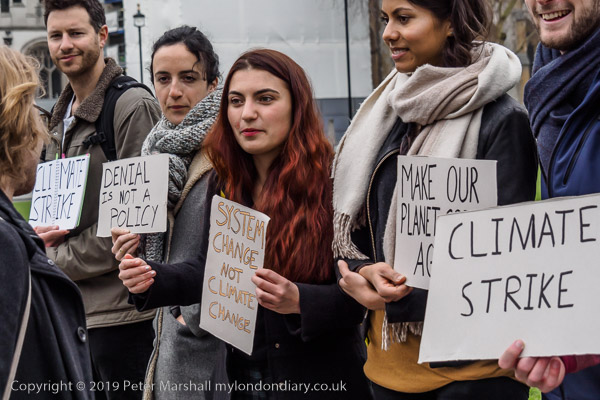
I’d known that there would be other protests taking place in the square, and one was by Climate Strike, one of many weekly #FridaysForFuture events taking place in many cities and towns across the world inspired by the action of 15-year old Greta Thunberg. The weekly protests here – like this one – have not really grown much since they started, but there have been several much larger and noisier protests Friday protests involving many school children.
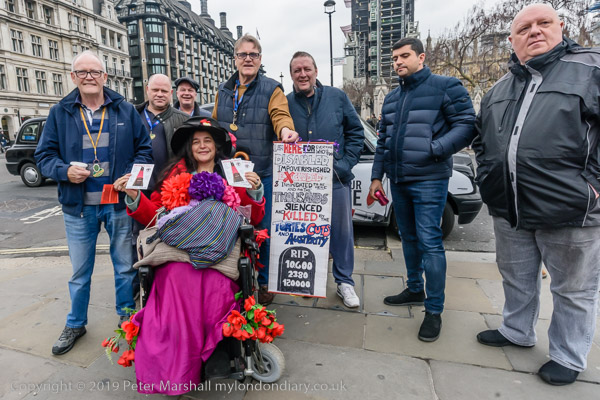
Another that I hadn’t really been aware of before became apparent when a large number of London’s black cabs came to a halt around Parliament Square, one of a number of protests by them demanding to be allowed to use all roads and bus lanes in London. I think it’s time to look again at taxis in London, and to replace the outdated system of ‘plying for hire’ and ‘the knowlege’ with one based on smartphone apps and professional sat-nav systems. Black cabs cause too much pollution and congestion to keep running as they now do in London. But I was pleased when a group of them came to support the DPAC protest against Universal Credit.
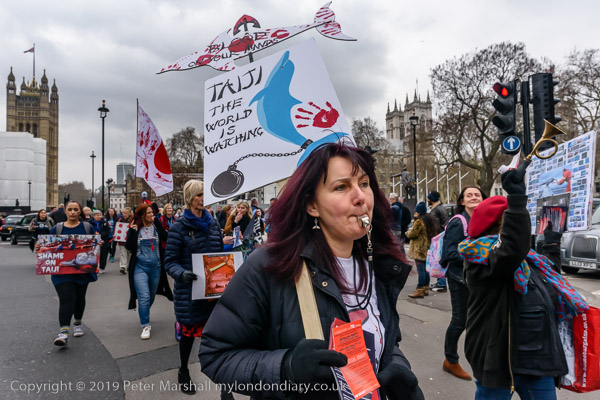
The final group of protesters in Parliament Square were at the start of a march to the Japanese embassy against the barbaric annual slaughter of dolphins in Taiji cove. I went with them as far as Downing St before returning to Parliament Square.
More at:
Scrap Universal Credit
End Japanese dolphin slaughter
Black Cab Drivers blockade
Weekly climate protest
Plastics protests in London
There are no adverts on this site and it receives no sponsorship, and I like to keep it that way. But it does take a considerable amount of my time and thought, and if you enjoy reading it, please share on social media.
And small donations via Paypal – perhaps the cost of a beer – would be appreciated.
All photographs on this and my other sites, unless otherwise stated, are taken by and copyright of Peter Marshall, and are available for reproduction or can be bought as prints.
To order prints or reproduce images
